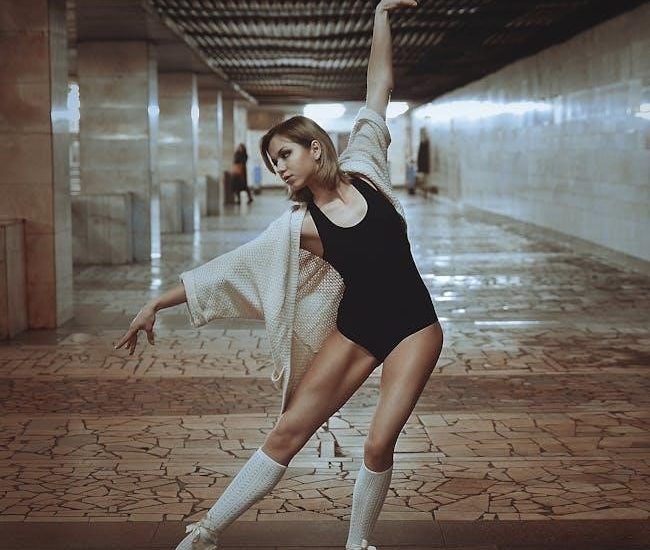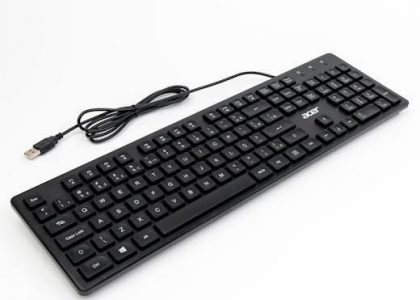A proper fit is essential for performance and comfort. Whether for gymnastics‚ dance‚ or yoga‚ the right size ensures freedom of movement and support. Accurate measurements and understanding fabric stretch are key to selecting the ideal leotard.
Why Understanding Leotard Sizes is Important
Understanding leotard sizes ensures a comfortable and functional fit‚ crucial for performance in activities like gymnastics or dance. A well-fitting leotard enhances mobility‚ prevents discomfort‚ and supports confidence. Incorrect sizing can lead to restricted movement or chafing‚ affecting performance. Different body types and activities require tailored fits‚ making size accuracy vital. This guide helps you navigate sizing nuances‚ ensuring optimal comfort and support for your specific needs.
How to Use This Guide Effectively
To make the most of this guide‚ start by reviewing the measurement section to understand your body dimensions. Compare your measurements with the size charts provided‚ considering factors like fabric stretch and activity-specific needs. Pay attention to tips for accurate measuring and common mistakes to avoid. Use the troubleshooting section if you encounter fit issues. By following these steps‚ you’ll be able to select a leotard that offers the perfect balance of comfort‚ support‚ and performance for your specific requirements.
Understanding Body Measurements for Leotards
Accurate body measurements are crucial for selecting the right leotard size‚ ensuring a comfortable and flattering fit. Key measurements include bust‚ waist‚ hips‚ and torso length.
Key Body Measurements for Leotard Sizing
The essential measurements for determining leotard size include bust circumference‚ natural waist‚ hip circumference‚ and torso length. These measurements ensure a snug yet comfortable fit‚ allowing for proper mobility during activities like gymnastics or dance. Accurate bust and hip measurements prevent gapping or tightness‚ while waist and torso measurements ensure the leotard sits correctly without rolling or bunching. These measurements guide the selection of sizes that align with your body proportions‚ ensuring both functionality and a flattering appearance.
Difference Between Numerical and Alphabetical Sizing
Leotard sizing systems vary between numerical (e.g.‚ 4‚ 6‚ 8) and alphabetical (e.g.‚ S‚ M‚ L) options. Numerical sizing often provides a more precise fit‚ catering to specific body measurements‚ while alphabetical sizing offers a broader fit range. For instance‚ a tall‚ slender individual may require a larger numerical size to accommodate their height‚ as seen in cases where a 5’10” person fits into an XL. Alphabetical sizing‚ however‚ focuses on general body proportions. Understanding these differences helps in selecting a leotard that balances comfort and functionality‚ especially for activities like gymnastics or dance.
How Body Measurements Translate to Leotard Sizes
Body measurements such as bust‚ waist‚ and hips are crucial for determining the right leotard size. These measurements are matched against standard size charts to ensure a snug yet comfortable fit. However‚ variations in sizing across brands can affect the translation of measurements to actual sizes. Fabric stretch and personal comfort preferences also play a role in how measurements correspond to leotard sizes‚ making it essential to consider these factors for an accurate fit.
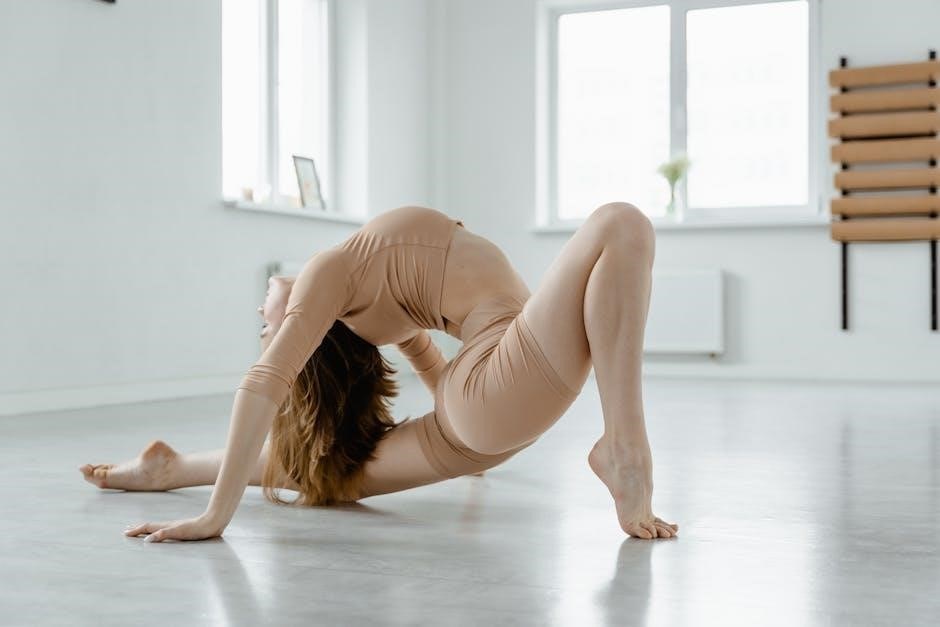
How to Measure Yourself Accurately
Use a flexible tape measure to take accurate body measurements. Keep the tape level and measure over undergarments for the best fit.
Step-by-Step Guide to Taking Body Measurements
To ensure accuracy‚ stand upright and relaxed. Use a flexible tape measure:
- Measure your bust at the fullest point‚ keeping the tape level.
- Find your natural waistline‚ typically above the belly button‚ and measure around it.
- Measure your hips at the widest point‚ usually 7-9 inches below your waist.
- For torso length‚ measure from the base of the neck to the crotch seam.
Take measurements over snug-fitting undergarments for the most accurate fit.
Common Mistakes to Avoid When Measuring
When measuring for a leotard‚ avoid common errors that can lead to poor fit:
- Measuring too loosely or tightly‚ as this can distort sizing accuracy.
- Not keeping the tape measure level‚ which can result in uneven measurements.
- Measuring over bulky clothing‚ which adds extra inches to your true size.
- Forgetting to measure in the correct locations‚ such as the natural waistline or fullest bust point.
- Not using a mirror or second person to ensure accuracy‚ especially for hard-to-reach areas.
Accurate measurements are crucial for a comfortable and flattering fit‚ so take your time and double-check your results.
Importance of Accurate Measurements for Fit
Accurate measurements are crucial for ensuring a leotard fits properly‚ providing both comfort and support. Ill-fitting leotards can restrict movement‚ cause discomfort‚ or lead to performance issues. Proper measurements ensure the leotard stays in place during activities‚ allowing for a full range of motion. They also help prevent issues like gapping or bunching‚ which can be distracting. By taking precise measurements‚ you can select a leotard that aligns with your body proportions‚ ensuring optimal performance and confidence in your appearance and functionality.

Factors Influencing Leotard Fit
Body type‚ fabric stretch‚ and personal comfort preferences significantly impact leotard fit. Additionally‚ variations in sizing across brands and international size differences can affect the final fit.
Impact of Body Type on Leotard Size
Body type significantly influences leotard sizing. For instance‚ a taller‚ slimmer individual may require a longer leotard‚ while a more muscular build might need a size up for comfort. Petites often find standard sizes too long‚ necessitating adjustments. Similarly‚ body proportions‚ such as broader shoulders or a longer torso‚ can affect fit. Understanding your body type helps in selecting a leotard that provides both support and a flattering appearance‚ ensuring optimal performance and confidence during activities like gymnastics or dance.
Role of Fabric Stretch in Fit and Comfort
Fabric stretch plays a crucial role in both the fit and comfort of a leotard. High-quality fabrics like spandex or elastane offer excellent elasticity‚ allowing for a snug yet flexible fit that moves with the body. The right level of stretch ensures the leotard stays in place during activities while providing comfort and support. Fabrics with poor stretch may lead to restricted movement or discomfort‚ making it essential to choose materials that balance durability and flexibility. Proper fabric stretch enhances performance and ensures a flattering‚ comfortable fit for any activity.
How Personal Comfort Preferences Affect Size Choice
Personal comfort preferences significantly influence leotard size choices. Some individuals prefer a snug fit for optimal support and performance‚ while others opt for a slightly looser fit for greater ease of movement. Comfort priorities‚ such as avoiding tightness around the shoulders or neckline‚ can guide size selection. Additionally‚ fabric type and thickness play a role‚ as some may prefer breathable‚ lightweight materials for comfort. Balancing personal comfort with functional needs ensures a leotard that feels good and performs well‚ whether for gymnastics‚ dance‚ or casual wear.
Variations in Sizing Across Different Brands
Leotard sizing can vary significantly between brands due to differences in cut‚ fabric stretch‚ and target markets. Some brands may label a size as “medium” while others call it “large‚” even for the same measurements. This inconsistency can make choosing the right size challenging. Factors like brand-specific fits‚ fabric types‚ and activity-focused designs contribute to these variations. To ensure the best fit‚ it’s essential to consult each brand’s size chart and consider customer reviews for insights into how their sizing runs. This approach helps navigate the differences and find a leotard that meets your needs.
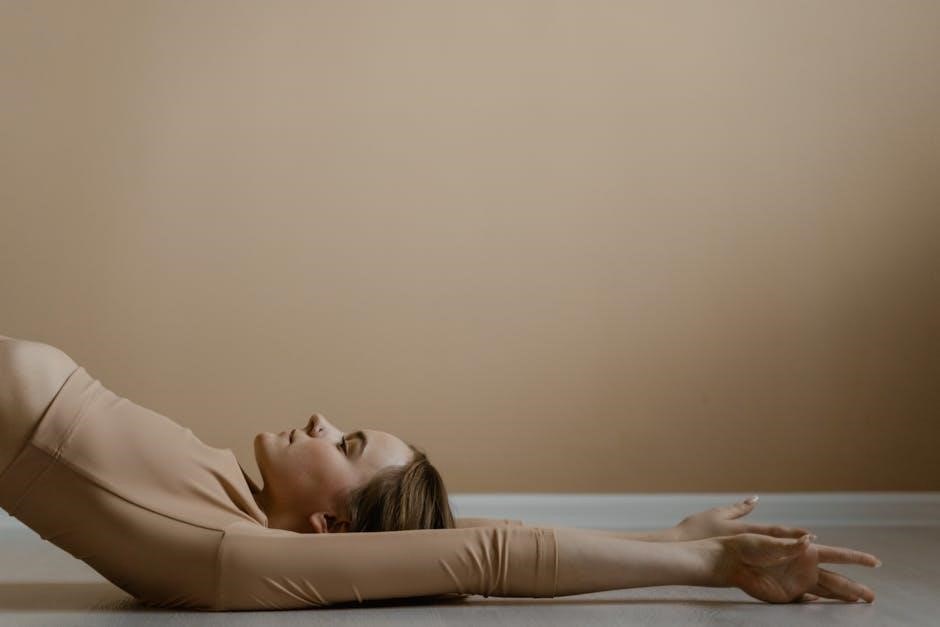
Leotard Size Charts Explained
A leotard size chart is a guide that matches body measurements to specific sizes‚ ensuring a proper fit for optimal performance and comfort during activities.
Standard Leotard Size Charts for Adults
Standard leotard size charts for adults are designed to provide a consistent reference for selecting the right fit; These charts typically include measurements for bust‚ waist‚ and hips‚ along with corresponding sizes. While sizing can vary between brands‚ most charts categorize sizes from XS to XXXL. To ensure accuracy‚ measure yourself carefully and compare your dimensions to the chart. Consider factors like fabric stretch and personal comfort preferences‚ as these can influence the fit. Always check the specific brand’s chart‚ as sizing standards may differ slightly. Proper fit ensures optimal performance and comfort during activities.
Size Charts for Children and Teenagers
Size charts for children and teenagers are tailored to accommodate growing bodies‚ ensuring a comfortable and appropriate fit. These charts typically include age ranges‚ height‚ and chest measurements. Sizes often range from toddler to teen‚ with specific adjustments for varying growth stages. Many brands provide detailed measurements to help parents select the correct size. Regularly measuring your child is essential‚ as sizes can change rapidly during growth spurts. Proper fit ensures comfort and mobility‚ whether for sports‚ dance‚ or casual wear. Always refer to the brand’s specific chart for accuracy.
Comparing Size Charts Across Different Brands
Size charts vary significantly between brands due to differences in design‚ fabric‚ and target demographics. Some brands cater to specific body types or activities‚ affecting measurements. Always consult the brand’s chart before purchasing‚ as sizes may not align universally. Fabric stretch‚ activity type‚ and intended use also influence sizing. To avoid discrepancies‚ measure yourself according to the brand’s guidelines. Comparing charts ensures a better fit‚ especially when switching brands or activities. Consistency in measurements helps bridge differences‚ providing a more accurate fit across various leotard styles and purposes.
Understanding International Size Differences
International size differences can cause confusion when shopping for leotards. Sizing standards vary between countries‚ with U.S.‚ European‚ and UK sizes differing significantly. A size 8 in the U.S. may not match a size 8 in Europe or the UK. These variations stem from differing measurement systems and body type assumptions. For example‚ European sizes may cater to slightly longer torsos‚ while U.S. sizes might be more forgiving in certain areas. Always consult the brand’s specific size chart‚ as international sizing can differ greatly. Understanding these differences ensures a better fit when shopping across global brands.

Fabric and Material Selection
Fabric choice impacts comfort‚ durability‚ and performance. Common materials include spandex‚ cotton‚ and lyrca‚ each offering unique stretch‚ breathability‚ and support tailored to specific activities and preferences.
Common Fabrics Used in Leotards and Their Properties
Leotards are made from various fabrics‚ each offering distinct benefits. Spandex and elastane provide exceptional stretch and elasticity‚ ideal for gymnastics and dance. Cotton blends offer breathability and softness‚ suitable for casual wear. Lycra is durable and maintains shape‚ while moisture-wicking fabrics like polyester are perfect for high-intensity activities. Some leotards feature a mix of materials to balance comfort‚ flexibility‚ and support‚ ensuring optimal performance across different uses.
How Fabric Choice Impacts Fit and Comfort
Fabric selection significantly influences both the fit and comfort of a leotard. Stretchy materials like spandex and elastane provide a snug‚ flexible fit‚ ideal for gymnastics and dance. Cotton blends offer softness and breathability‚ enhancing comfort for casual wear. Moisture-wicking fabrics keep you dry during intense workouts‚ while thick or textured materials may offer more coverage. The right fabric ensures optimal support and movement‚ tailored to your activity and body type‚ making it crucial for both performance and comfort.
Choosing the Right Fabric for Your Activity
Selecting the appropriate fabric for your leotard is crucial based on your activity. For high-intensity workouts or gymnastics‚ opt for durable‚ stretchy materials like spandex or elastane that provide flexibility and support. Dance leotards may benefit from a blend of cotton and spandex for breathability and movement. Moisture-wicking fabrics are ideal for activities that cause heavy sweating. Consider the activity’s demands‚ such as compression for support or softness for comfort‚ to ensure the fabric meets your performance and comfort needs effectively.

Different Types of Leotards
Leotards vary by purpose‚ with gymnastics styles focusing on fit and functionality‚ dance leotards blending style and performance‚ and compression leotards offering support for active use.
Gymnastics Leotards: Fit and Functionality
Gymnastics leotards prioritize a snug‚ supportive fit for optimal performance. They often feature moisture-wicking fabrics to keep athletes dry during intense routines. The design ensures freedom of movement while maintaining coverage. Proper sizing is crucial to avoid restrictions or discomfort. A well-fitted leotard enhances flexibility and confidence‚ allowing gymnasts to perform complex moves effortlessly. Poor fit can lead to distractions or injuries‚ making accurate measurements essential for selecting the right size.
Dance Leotards: Style and Performance Fit
Dance leotards blend style with functionality‚ offering a seamless fit for various dance styles. They are designed to move naturally with the body‚ providing both support and elegance. The fabric choice often emphasizes breathability and stretch to accommodate dynamic movements. A proper fit ensures comfort during performances and rehearsals‚ allowing dancers to focus on their technique. Ill-fitting leotards can restrict movement or cause discomfort‚ making accurate sizing crucial for optimal performance and aesthetic appeal.
Compression Leotards: Size and Support
Compression leotards are designed to provide firm support and a slimming effect. They are popular for their ability to enhance posture and reduce muscle fatigue during high-intensity activities. The sizing for compression leotards often runs smaller than standard leotards due to their tight fit. It’s important to choose a size that offers adequate compression without restricting movement or causing discomfort. Proper sizing ensures optimal support and comfort‚ making them ideal for both performance and everyday wear. Always refer to the size chart and consider personal comfort preferences when selecting.
Styling Leotards: Fit for Fashion and Comfort
Styling leotards combine fashion with comfort‚ making them versatile for both casual and athletic wear. They often feature trendy designs‚ such as bold colors‚ patterns‚ and unique cuts. When choosing a size‚ ensure the fit allows for a full range of motion while maintaining a flattering silhouette. The fabric should feel soft against the skin‚ and the style should align with your personal aesthetic. Whether layering or wearing alone‚ the right size ensures both confidence and comfort‚ blending seamlessly into your wardrobe for any occasion.

Tips for Choosing the Right Size
Ensure accurate measurements‚ consider activity-specific needs‚ and check size charts. Read reviews for fit insights and choose fabric that suits your comfort preferences for optimal performance.
Considering Activity-Specific Fit Requirements
Choose a leotard that matches your activity’s demands. Gymnastics requires a snug‚ supportive fit to prevent wardrobe malfunctions. Dance leotards should allow a full range of motion while maintaining style. Opt for thicker fabrics like spandex or lyrca for high-impact sports‚ while breathable materials suit yoga or casual wear. Ensure the neckline and armholes aren’t restrictive. Consider compression leotards for added support during intense workouts. Always check size charts tailored to your activity to ensure optimal comfort and performance. Proper fit enhances both functionality and confidence‚ making it essential for peak performance.
How to Match Leotard Size with Your Clothing Size
Matching your leotard size to your clothing size requires careful consideration of fit and fabric. Start by referencing standard size charts‚ as leotard sizing may differ from regular apparel. Measure your bust‚ waist‚ and hips to align with the chart. Note that leotards are often snugger‚ so you may need to size up for comfort. Consider the fabric’s stretch and activity requirements. Compare your measurements to ensure accuracy‚ as some brands vary. A well-fitting leotard enhances performance and confidence‚ making it crucial to select the right size for your needs.
Importance of Reading Reviews for Fit Insights
Reading reviews is crucial for gaining real-world insights into leotard fit. Others’ experiences can highlight sizing quirks‚ comfort levels‚ and how the fabric performs during activities. For example‚ taller individuals often find they need larger sizes for proper coverage. Reviews also shed light on how brands differ in sizing accuracy and stretch. By understanding others’ fit experiences‚ you can make informed decisions about your size choice‚ ensuring a leotard that meets your performance and comfort needs. Reviews act as a bridge between generic size charts and your unique body proportions.

Special Considerations
Leotard fit varies with body type‚ fabric stretch‚ and personal comfort preferences‚ making it essential to consider these factors for optimal performance and satisfaction.
Plus-Size Leotards: Finding the Perfect Fit
For plus-size individuals‚ accurate measurements are crucial to ensure comfort and support. Height and body proportions significantly influence size selection‚ as a taller or longer frame may require a larger size. Opting for stretchy fabrics like spandex can provide a snug yet comfortable fit. However‚ sizing varies across brands‚ so consulting size charts or trying leotards before purchase is recommended. Reading reviews from others with similar body types can also offer valuable insights‚ helping you choose the perfect fit for optimal performance and confidence.
Maternity Leotards: Sizing and Comfort
Maternity leotards require careful sizing to accommodate a growing belly while providing support and comfort. Look for stretchy fabrics like spandex that allow for expansion and flexibility. Measure around the fullest part of the bust and hips to ensure a snug yet non-restrictive fit. Avoid tight leotards that may dig into the skin‚ as this can cause discomfort. Consider brands that specialize in maternityewear‚ as they often offer tailored sizing charts. Reading reviews from other expectant mothers can also provide valuable insights for finding the perfect fit during pregnancy.
Leotards for Different Body Proportions
Leotards must cater to diverse body types‚ ensuring comfort and support. For petite frames‚ opt for shorter lengths to avoid overwhelming the torso. Tall individuals may prefer longer styles for better coverage. Hourglass figures benefit from wide straps and defined waistlines‚ while pear-shaped bodies may find high-cut legs flattering. Athletic builds can choose compression leotards for a sleek fit. Consider fabric stretch and straps that accommodate broader shoulders or bust sizes. Consulting size charts and reading reviews can help tailor choices to specific body types‚ ensuring a flattering and functional fit for every silhouette.
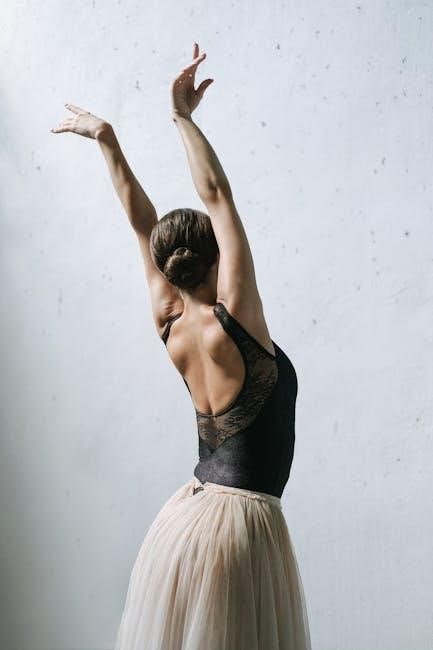
Care and Maintenance
Proper washing and drying preserve the leotard’s elasticity and shape. Hand wash with gentle detergent‚ avoid hot water‚ and air dry to maintain fabric integrity and comfort.
How to Wash and Dry Your Leotard Properly
To maintain your leotard’s quality‚ wash it gently by hand using cold water and a mild detergent. Avoid using bleach or harsh chemicals‚ as they can damage the fabric. Gently scrub any stains before rinsing thoroughly. Do not wring or twist the leotard‚ as this can stretch or misshape it. To dry‚ lay it flat on a clean towel‚ away from direct sunlight. Avoid machine drying‚ as high heat can shrink or ruin the material. Proper care ensures your leotard retains its elasticity and vibrant appearance for longer.
Maintaining the Fit and Shape of Your Leotard
To keep your leotard fitting well‚ avoid machine washing and drying‚ as heat and friction can stretch or shrink the fabric. Always hand wash in cold water with a gentle detergent and lay it flat to dry. Avoid hanging‚ as this can cause stretching. Store your leotard in a cool‚ dry place‚ away from direct sunlight. Do not fold it tightly‚ as this can crease or misshape the material. Regularly checking for snugness and avoiding over-stretching during use will help maintain its fit and longevity.

Troubleshooting Fit Issues
Identify if your leotard is too tight or loose. For tightness‚ consider alterations or a size up. For looseness‚ opt for a smaller size or adjustments.
What to Do If Your Leotard Feels Too Tight
If your leotard feels too tight‚ it may restrict movement and cause discomfort. Check the size chart again to ensure proper fit. Consider exchanging for a larger size or opting for alterations to adjust the fit. If tightness persists‚ consult the brand’s customer support for guidance. Proper fit is crucial for both performance and comfort‚ especially during physical activities like gymnastics or dance. A well-fitting leotard should allow a full range of motion without feeling restrictive.
What to Do If Your Leotard Feels Too Loose
If your leotard feels too loose‚ it may lack the necessary support and fit. Check the size chart to confirm your size and consider a smaller option. Simple alterations‚ like taking in the seams‚ can improve the fit. If the looseness is significant‚ contact the brand’s customer service for guidance or exchange options. A well-fitting leotard should provide comfort and support without being overly restrictive or excessively baggy‚ ensuring optimal performance during activities like dance or gymnastics.
How to Alter a Leotard for a Better Fit
If your leotard needs adjustments for a better fit‚ start by identifying the areas that are too loose or ill-fitting. Taking in seams or darts can provide a more tailored look. For straps‚ shortening or tightening them can improve support. Adding elastic or mesh panels can enhance flexibility and shape. Use a seam ripper to carefully remove stitching and redefine the fit. For intricate changes‚ consider consulting a professional tailor. Proper alterations ensure comfort and confidence‚ making your leotard both functional and flattering.
Achieving the perfect leotard fit is about balance—comfort‚ support‚ and style. By understanding measurements‚ fabric‚ and sizing‚ you can make informed choices. Remember‚ the right fit empowers confidence and performance.
Final Tips for a Perfect Leotard Fit
For a flawless fit‚ consider your activity needs and body type. Ensure accurate measurements and check size charts. Don’t hesitate to try different sizes for comfort. Pay attention to fabric stretch for flexibility and support. Read reviews for insights into how styles fit others. If possible‚ test the leotard during movement to ensure it stays in place. Prioritize both functionality and personal comfort to enhance performance and confidence. A well-fitted leotard is an investment in your activity and well-being.

